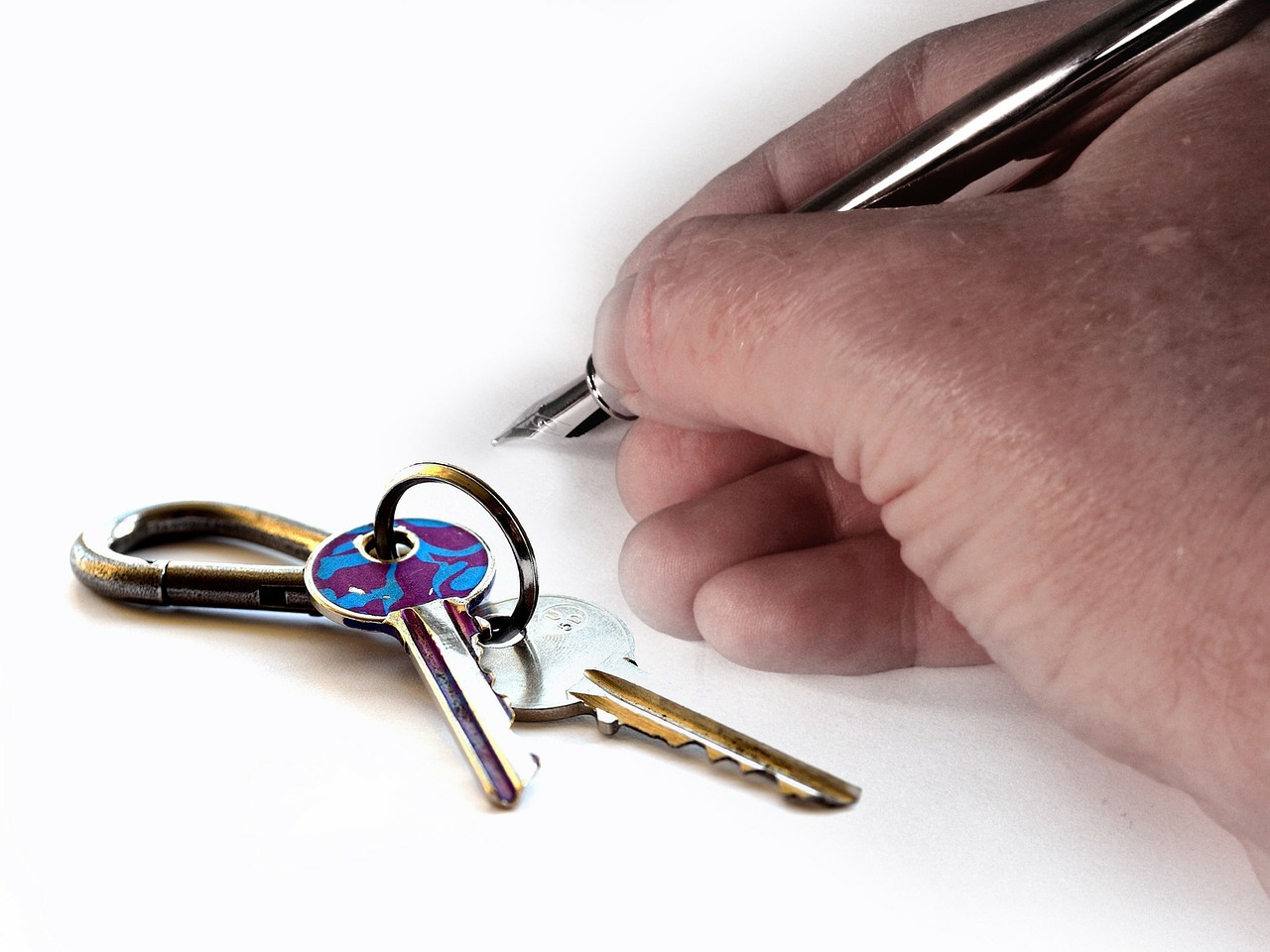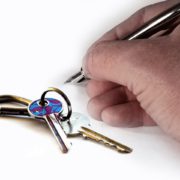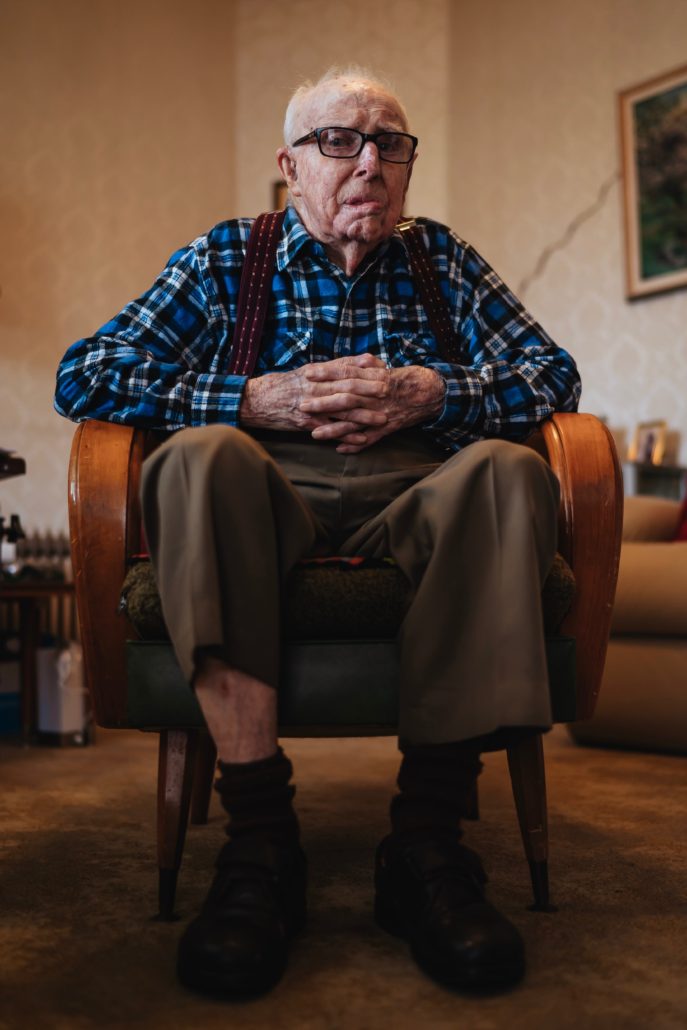Are You a Career Tenant – or a Career Landlord?

My wife and I made a highly disruptive decision recently. We decided to sell our golf course home of 19 years and move into a rental.
It’s the first time we have rented in 46 years of our 49-year marriage.
Right or wrong, the decision was based on trying to catch the top of the wave of a hot Denver real estate market that is starting to soften. We’ll rent for a while as the market corrects with an eye toward a downsize when we re-enter as owners.
Prescient? If we are, it will be the first time. We may end up on the pile of bodies with others who have tried to time either the real estate or stock market. Nonetheless, it’s full steam ahead, tolerating the inconvenience of house showings and maintaining two households. (Yes, we signed a rental agreement without the house being sold – craziness prevails!)
After 46 years of home-ownership, this simply feels weird, moving into something that someone else built and put their own personal touch on and not being able – or wanting – to fully put our own personal touch on it.
Becoming a tenant is going to take some adjusting. Which bring me to a curious question.
Are you a career tenant or a career landlord?
It occurred to me that there is a parallel here to career decisions.
I’ve been self-employed for the last 17 years, much of it as a career coach. Renting feels like going back to work for somebody, building someone else’s dream. I’m paying the mortgage for this landlord, helping him/her build a real estate portfolio.
I was a career tenant for most of my working life – for 33 years before deciding to be a career landlord. For much of those three decades, I was never crazy about “renting space” on someone’s payroll to build something that I didn’t define or have much control over.
Like most, I did it for the money and the perks. I drank the kool-aid that said it was the only real secure, stable place to be. And when I jumped into it fifty years ago that held true. But that changed radically over time to where working for a corporation today is one of the least secure places to be, career-wise.
As career tenants, we are subject to eviction at any time, at the drop of a hat and for any number of landlord-centric decisions. And those landlord-centric decisions have become more common and less compassionate.
 My friend Rick, a polished laboratory sales professional for 25 years, found himself on the street unexpectedly, at 58, following a merger of two hospital systems. The landlord changed, rendering all tenants subject to eviction without cause. He was replaced by two junior, lower-cost tenants.
My friend Rick, a polished laboratory sales professional for 25 years, found himself on the street unexpectedly, at 58, following a merger of two hospital systems. The landlord changed, rendering all tenants subject to eviction without cause. He was replaced by two junior, lower-cost tenants.
It’s a story repeating itself daily in today’s ruthless environment of mergers and acquisitions, private equity buyouts and companies adjusting to rapidly changing and disruptive technologies.
How to become a career landlord
How can you protect yourself against becoming a vulnerable career tenant? I suspect you aren’t prepared or interested in going out on your own or starting a business. I get it. Most people aren’t.
But you can become a career landlord and still be on someone else’s payroll.
It’s really about mindset.
Become a “Business of One”
J.T. O’Donnell is an experienced career counselor, coach and founder and CEO of Work It Daily, a private online career coaching platform. As a former HR professional and recruiter, she talks with authority about the importance of a career mindset.
One of J.T.’s compelling arguments is that our cultural programming conditions us with “career bias” wherein titles or “what we do” becomes a personal identity. Job titles affect our perception of people and people’s perceptions of us. Thus, too often we build careers to earn approval from others, a track that can lead to career dissatisfaction.
By shedding the “golden handcuffs” of traditional employment with its overemphasis on the title and a spot on the org chart and by becoming a “business of one” we can become career landlords instead of career tenants.
 As J.T. says: “Working ‘for’ companies implies they’re in charge and you are being held hostage by the pay and benefits. Instead, you must see yourself as a business-of-one who wants to partner ‘with’ employers to create a mutually beneficial and respectful relationship.”
As J.T. says: “Working ‘for’ companies implies they’re in charge and you are being held hostage by the pay and benefits. Instead, you must see yourself as a business-of-one who wants to partner ‘with’ employers to create a mutually beneficial and respectful relationship.”
By viewing yourself as a “business of one”, you become the employer and the company becomes the employee in which you “partner” with employers to bring them the skills and experience you have acquired that can create a powerful relationship.
It’s really a key to survival in today’s volatile business world if one chooses not to be self-employed.
Recasting yourself as “employed landlord”
With the new “business of one” mindset, you are positioned to essentially reverse the typical employer/employee relationship by taking ownership and becoming the landlord of your talents, skills, and experiences. As the landlord, you take control of many of the employment variables that were conceded under the traditional employment model.
Rent and lease terms are now salary and benefits based on the quality of the property – you.
As an “employed landlord”, you avoid becoming a hostage to the pay and benefits that come with “working for” a company. It’s now the company working for you and paying a rental for what you bring to the table.
Three key steps to becoming an “employed landlord”
Warning: this isn’t easy or automatic.
Adopting a landlord mindset and making it happen isn’t a casual occurrence. And it’s not just a “time in grade” thing. Earning and maintaining career landlord and business-of-one status requires a commitment to becoming the best you can be in the field you choose. Without the credentials to back up your position, you aren’t likely to achieve the rental payment you want.
Here are five steps that will help you avoid a career lifetime as a tenant, shed the “golden handcuffs” of traditional employment and put you in the driver’s seat as the landlord of your career.
- Know what you are good at and really want to do. Become a specialist. In other words, know your strengths and specialties. Being a jack-of-all-trades may have worked in a previous era, but not today. Your prospective employer-partner already has lots of folks who are simply after a paycheck and lack a clear focus on what they do well. Employers want highly skilled specialists where their return-on-investment is high. That is your bargaining chip because it’s a select few that show up at an employer’s doorstep with highly developed skills and an attitude of “let’s partner up – I can help you.”
- Stay ahead of emerging, disruptive technologies. Once you’re clear on your strengths and specialty, it is essential to be on top of changes taking place within your specialty. One of the bargaining chips you have to extract higher rent for your services is to show your tenant company that you are ahead of the changes in the industry and are a special resource that can help protect them from technology disruptions that can undermine their core business.
That means ongoing investment in deepening your expertise through reading, study, additional education and/or certifications, taking leadership positions in associations or forums dedicated to your specialty. Your rental price depends on your ability to be a key problem-solving resource by bringing leading-edge resources to the problem.
- Build a brand around your expertise. Your commitment to becoming a “business-of-one” requires that you develop a brand that focuses on the value you bring. That involves two key components for conveying a clear, consistent and compelling message that focuses on the value that you bring:
- A resume that is built on quantifiable achievements in our area of expertise.
- A LinkedIn profile that is consistent with the resume and makes it crystal clear what your specialty is and what you have been able to do with it.
- Invest in building your network. J.T. O’Donnell is correct when she says that “your network is your net worth.” She is also spot on by reminding us that “every job today is temporary.” Making a meaningful career transition without a robust network is difficult. Consider, for example, that 80% of jobs are filled through referrals and networking and the other 20% through job boards and recruiters.
As a career coach, I’ve worked with very talented, experienced professionals that have neglected this area of their professional life. There is a natural tendency to downplay the value of networking when they are ensconced in what feels like a safe, secure position that is very demanding of their time. When the fit hits the shan and they suddenly find themselves unemployed, that failure to nurture an active network hinders their ability to re-enter the job market on a timely basis.
Networking and building key professional relationships should never stop. In fact, with the “career landlord” mindset, continually building a robust professional network should be a priority activity. LinkedIn today provides an excellent platform for building a network. But just getting your LinkedIn connection count up is not sufficient by itself. The network needs to be “worked” and that means phone conversations and emails to maintain and cultivate the relationship. It means sharing helpful information with network partners and being a resource for them. What goes around comes around – the network will respond in kind.
- Own your professional identity. As a business-of-one and career landlord, you are integrating all of your acquired skills, experiences, education and network to bring unique value and problem-solving ability to an entity in need. Learn how to effectively communicate your passions, your deep skill set and solutions as you work to continuously refine and expand your abilities within your specialty.
It will be helpful to also adopt a new perspective on mobility. With this new mindset, mobility within an organization is secondary to going wherever or to whatever is the right next step in your continuing professional development. Titles are secondary to how the job fits your overall growth as a landlord. You are taking ownership of your career destiny and building your own dreams, not someone else’s.
 In 1964, Bob Dylan popularized his song “The Times They Are A Changing”. It should be the theme song for a career landlord. Changes that two decades ago took years to evolve are now happening in months, even weeks. And it’s catching career tenants by surprise daily. When that shoe falls for an over-50 career tenant where ageism gets stirred into the equation, job re-entry can be extremely difficult and grueling.
In 1964, Bob Dylan popularized his song “The Times They Are A Changing”. It should be the theme song for a career landlord. Changes that two decades ago took years to evolve are now happening in months, even weeks. And it’s catching career tenants by surprise daily. When that shoe falls for an over-50 career tenant where ageism gets stirred into the equation, job re-entry can be extremely difficult and grueling.
If you are in your mid-to-late forties or into your fifties and feeling super secure in your position, I suggest doing a deep dive into evaluating just how safe and secure you are, with questions like the following:
- How aware are you of the top three key initiatives that are propelling your company forward and driving top management decisions? Can you articulate them right now? If not, you are too far away from the core that protects and defines your career path. You are entrenched as a career tenant.
- Having defined the key initiatives, how entwined are you in their development? Are you a participant or a spectator? Are you involved day-to-day in pro-active contributions to these initiatives? Or are you viewed as a bit-player, a “delegatee” and not a “delegator”?
- How does your current skill set align with the company’s key initiatives? Are there identifiable gaps between what you can offer and what the initiatives call for? If the gaps exist, it becomes pretty fundamental. Is the company worth the time, money and effort to close the gap? Or is your current skill set better deployed with a company where key initiatives align better with your current strengths?
Either way, this process moves you to a career-landlord mindset. Maybe you are where you should be even if it means a skill-upgrade. Consider that top management worth their salt will appreciate and support an attitude that portrays a commitment to get better and get more in line with key initiatives. If they don’t, perhaps you have the clue that it’s time to look for another spot to lease your services to.
Be so good they can’t ignore you
Early in his career, comedian Steve Martin decided to “become so good they couldn’t ignore him.” Through years of experimenting with crazy, off-the-wall acts, he achieved his goal.
You, as a “business of one” have the same opportunity. And never has it been more critical to work toward a Steve Martin type goal.
As a moderately-skilled, out-of-date career tenant you are extremely vulnerable. Unlike Steve Martin, few are going to be willing to adopt a “business-of-one” mindset and become “so good they can’t be ignored” with their skill set and problem-solving ability. Your willingness to do so is your edge.
It’s critical and important to start the evaluation process now and chart a path to becoming a career landlord that puts you in control of your career destiny.
Do you have a career story that illustrates either side of this argument i.e. have you experienced the effect of being either a career-tenant or a career-landlord? Tell us what you’ve experienced in this area, either via comments below or via email to gary@makeagingwork.com. We really appreciate your feedback.






 (that’s no wind for you non-mariners) would keep his ship moving and his crew busy by having them row a small boat out a few hundred yards with a rope attached to the main ship, drop anchor and pull the ship to them. When you start out with a walking/jogging exercise routine, walk/jog to a close-in telephone pole and back (or similarly repeating marker like the end of a block) the first day and then the next exercise day walk/jog to the next furthest telephone pole/block and back. Keep extending it and before you know it you have exceeded your best expectations for this life-altering activity. And you will:
(that’s no wind for you non-mariners) would keep his ship moving and his crew busy by having them row a small boat out a few hundred yards with a rope attached to the main ship, drop anchor and pull the ship to them. When you start out with a walking/jogging exercise routine, walk/jog to a close-in telephone pole and back (or similarly repeating marker like the end of a block) the first day and then the next exercise day walk/jog to the next furthest telephone pole/block and back. Keep extending it and before you know it you have exceeded your best expectations for this life-altering activity. And you will:








 Here’s a taste: by way of encouraging continued and deeper learning, the authors remind us that we seriously underutilize our brain capacity and that we can counteract the ravages of brain cell disintegration associated with ageing by increasing neural connections through meditation (pick your own form) and lifelong learning.
Here’s a taste: by way of encouraging continued and deeper learning, the authors remind us that we seriously underutilize our brain capacity and that we can counteract the ravages of brain cell disintegration associated with ageing by increasing neural connections through meditation (pick your own form) and lifelong learning.